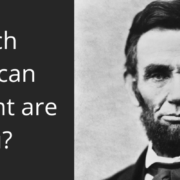Uniformity Versus Diversity
Uniformity Versus Diversity

Uniformity Versus Diversity
What is stronger: uniformity or diversity? Pundits upset about the lack of ruthlessness in Game of Thrones’ latest episode are missing a better point about leadership.
[Spoiler alert] Episode 2 led watchers to gird themselves for the death of beloved characters. After all, who could forget season 1 in which Robert Baratheon and Ned Stark met their unexpected demise? Who would it be this time — Danaerys, Jon Snow, Tyrion, Varys, Sansa, Arya? All of them survived, winning the epic battle against the Night King.
The end of the Night King sets up a more interesting struggle between Team Targaryen and Queen Cersei. This struggle pits uniformity against diversity.
Good fiction prompts us to question conventional wisdom. The upcoming struggle gives us an opportunity to explore the limits of uniformity and diversity.
There is no “I” in Targaryen
Team Targaryen represents diversity — there is no “I” in Targaryen. Daenerys has encouraged debate among her counselors, permitted them to challenge her thinking, and empowered some questionable leaders who have unexpectedly risen to the occasion.
The coalition fought as one against the Night King, but that epic threat masked an emerging leadership struggle as the North refuses to bow to Daenerys and will only follow Jon Snow. The latter’s revelation as the last surviving male Targaryen complicates questions of power and authority.
The Symbol of Uniformity
Cersei, meanwhile, is the symbol of uniformity. It’s her way or the highway. Even her brother and lover, Jamie, left for Team Targaryen when Cersei’s demands became too much to stomach. She is systematically shedding all naysayers and anyone not fully prepared to obey.
After seeing the seven kingdoms tear each other apart, Cersei sees strength in uniformity. She believes they can act faster and strike more decisively than the Targaryen coalition and hold together in the face of adversity.
Team Targaryen
I’ll be watching to see how Team Targaryen’s leader team adjusts in the face of diverging interests. Jon Snow’s ability as a Reconciler in keeping the coalition together and gaining consensus on a shared vision and strategy will be essential for success. Can Daenerys set aside fears of being displaced and empower Jon to play that role? Team Targaryen will also need the ideas of Tyrion (Maverick) and the systematic thinking a Varys (Operator) to create blind spots for Cersei and exploit them.
Team Cersei
I’ll also be watching to see how Cersei (Maverick) attempts to create and exploit fissures within Team Targaryen. Her best strategy is to get her opponents to paralyze themselves. Cersei is brilliant, but can she anticipate and neutralize her opponent’s creativity while acting decisively faster than they can? Will she listen to wise counsel that challenges her thinking?
More broadly, well-crafted fiction can help us explore the conditions that can turn diversity into unity and prevent uniformity from blindness and insensitivity.
What to learn
Want to learn more about balanced leader teams and ways to turn diversity into a strength? Take our “Which Team Targaryen Leader Are You” quiz. Find out which Game of Thrones leader leads like you and how to bring out the best in yourself and others.
























